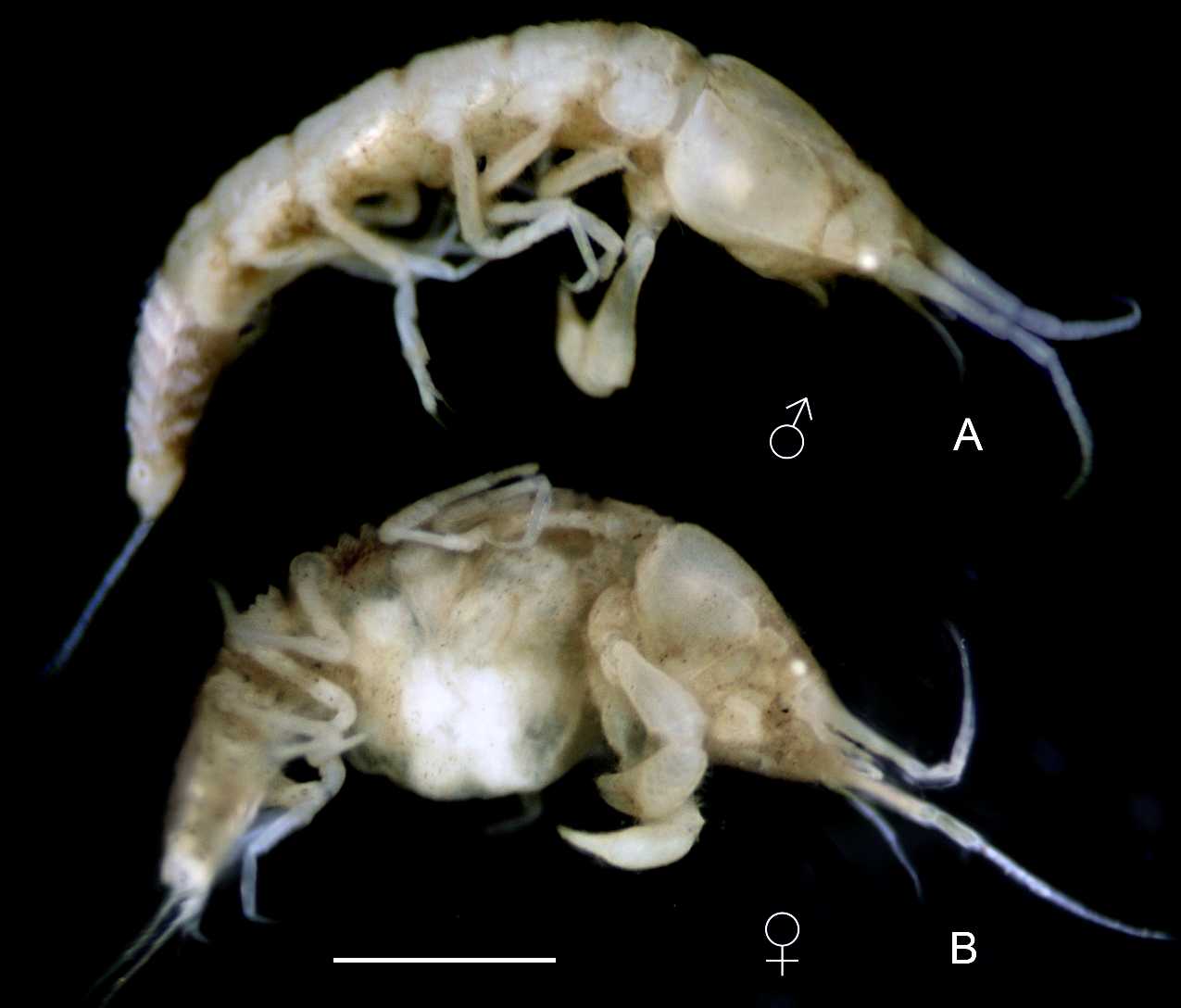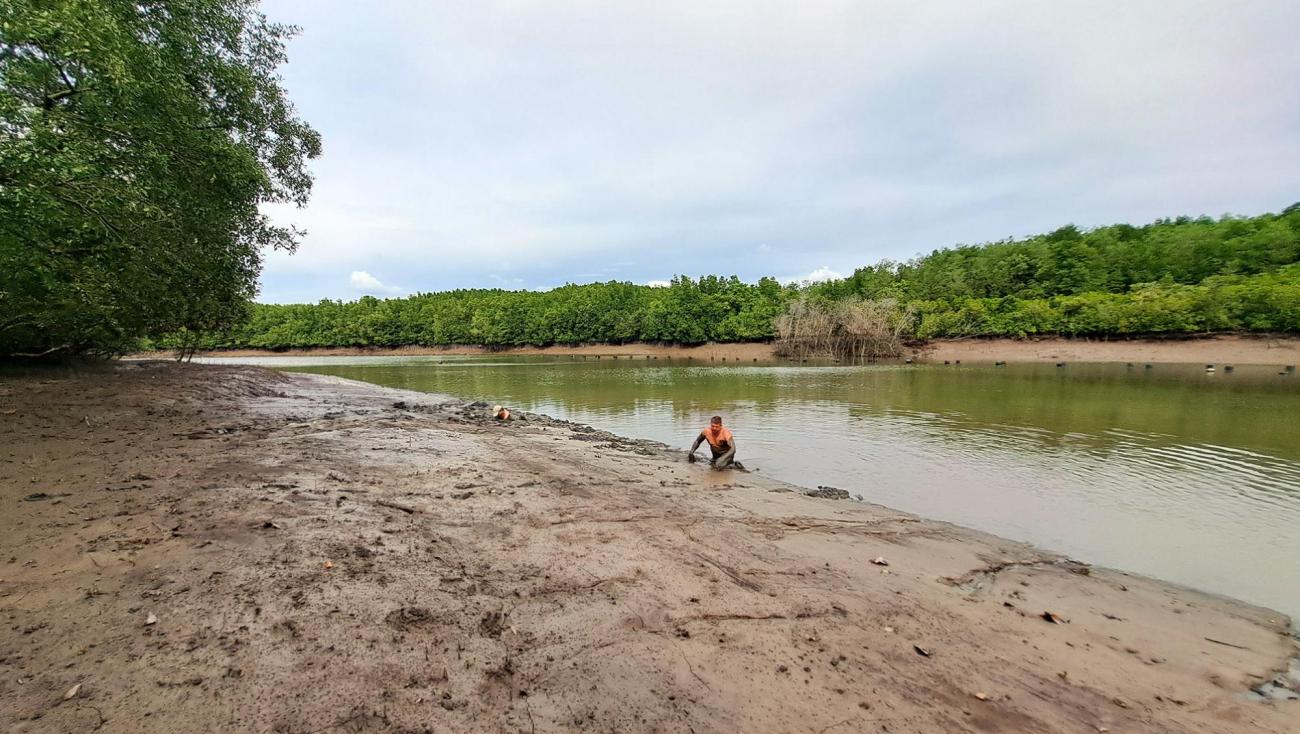
A detailed study of crustacean biodiversity in the mangrove swamps of the Cần Giờ Mangrove Biosphere Reserve, located near Ho Chi Minh City in southern Vietnam, revealed a high species diversity of tanaids (Tanaidacea Dana, 1849). These organisms form specific faunal assemblages inhabiting deep-silted mangrove habitats. As part of the study, a new species, Pagurapseudopsis vietnamica Marin, Nguyễn, Palatov, 2025, was described, along with its key ecological characteristics. Molecular genetic analysis revealed its close relationship to P. thailandica Angsupanich, 2001, previously known from Songkhla Lake (lagoon) in Thailand (Gulf of Thailand). However, the new species is clearly distinct in morphological features, particularly in males.
In the Kanze mangrove swamps, it coexists with several other tanaid species. Inhabiting the surface and upper layers of alluvial silt covering the bottom of enclosed lagoons surrounded by dense mangrove thickets, during the rainy season (September–October), this species forms dense aggregations of up to 50 individuals per square meter. It is the third most abundant tanaid in this biotope, behind Ctenapseudes vuxuankhoi Marin, Palatov et Nguyễn, 2024 (up to 1,300 individuals/m²) and Pseudohalmyrapseudes alexeitiunovi Marin, Palatov et Nguyễn, 2024 (up to 120 individuals/m²).

Like other marine tanoids found in this area, this species likely plays an important role in the food web, serving as the primary consumer of detritus derived from plant matter arriving from land. Its diet likely consists primarily of detritus derived from decayed or decomposed fallen leaves of the mangrove tree Rhizophora apiculata Lam.
These data significantly expand our understanding of the diversity and structural organization of mangrove communities in the region and represent the second discovery of a representative of the genus Pagurapseudopsis in Vietnamese waters. Understanding the mechanisms that shape the biodiversity of these ecosystems is important not only for reconstructing evolutionary processes but also for developing effective conservation strategies.
The work was published in the journal Zoosystematica Rossica: A new species of the genus Pagurapseudopsis (Tanaidacea: Pagurapseudopsididae) from the Cần Giờ mangrove area in southern Vietnam I.N. Marin, T.V. Nguyễn, D.M. Palatov Zoosystematica Rossica, 2025, 34(2): 258–271.
